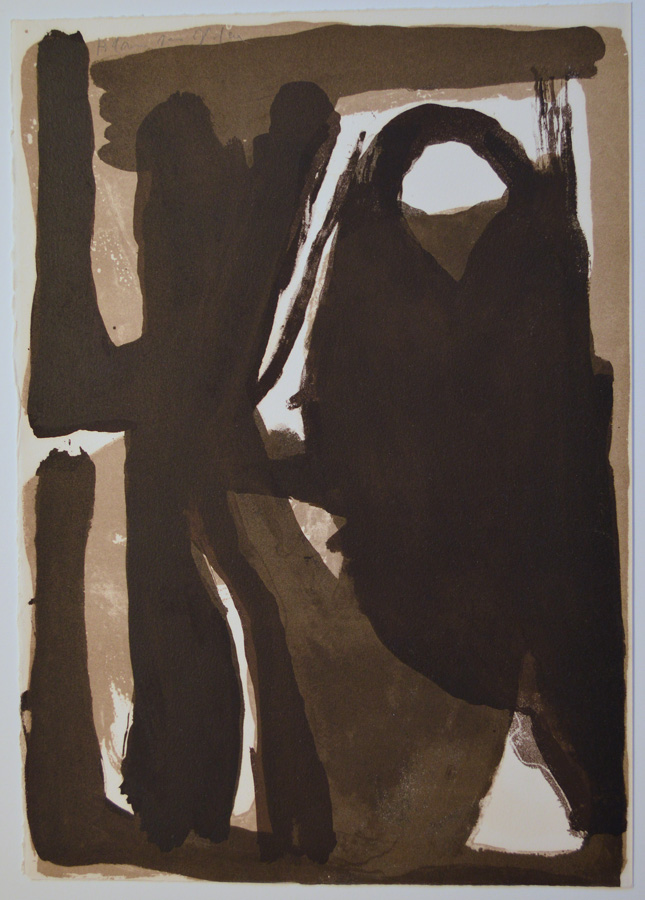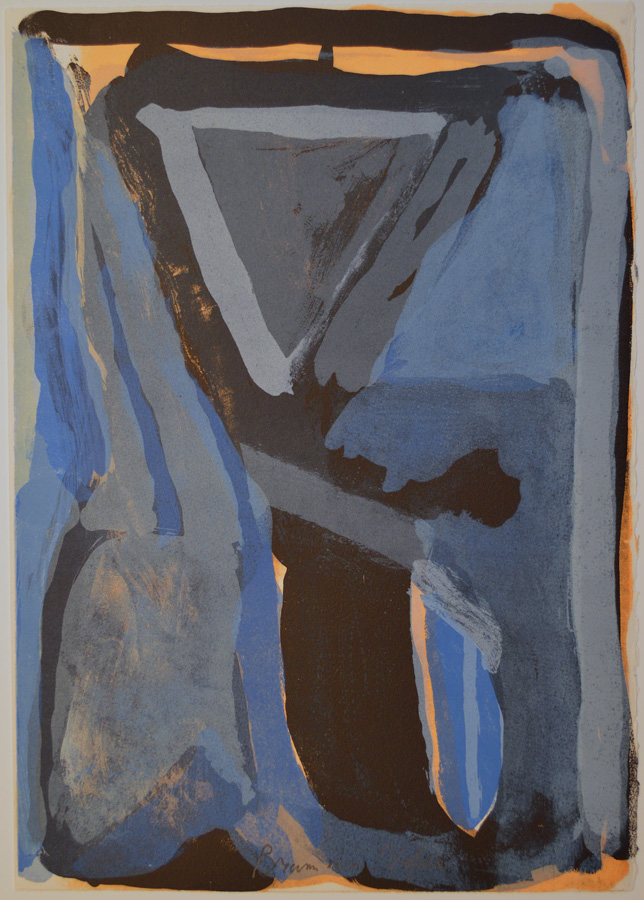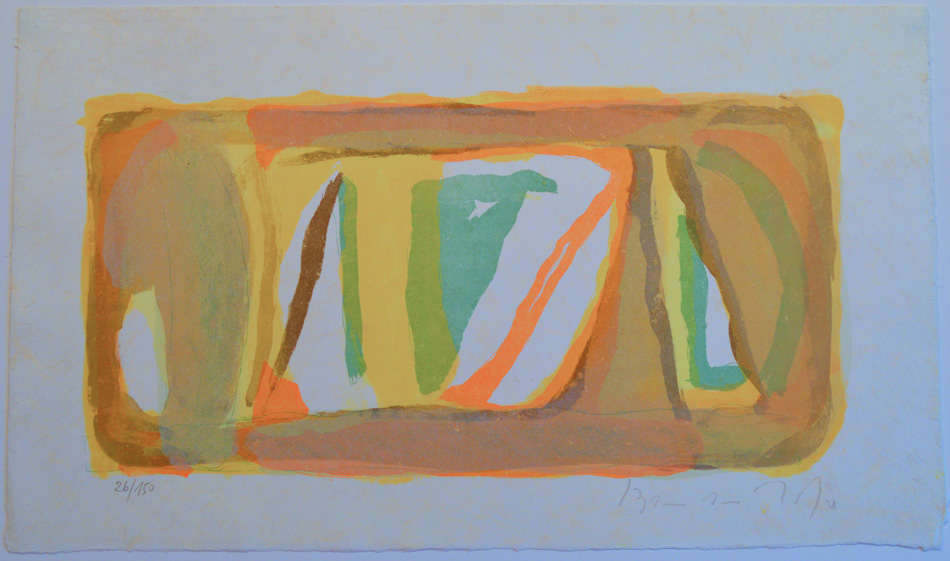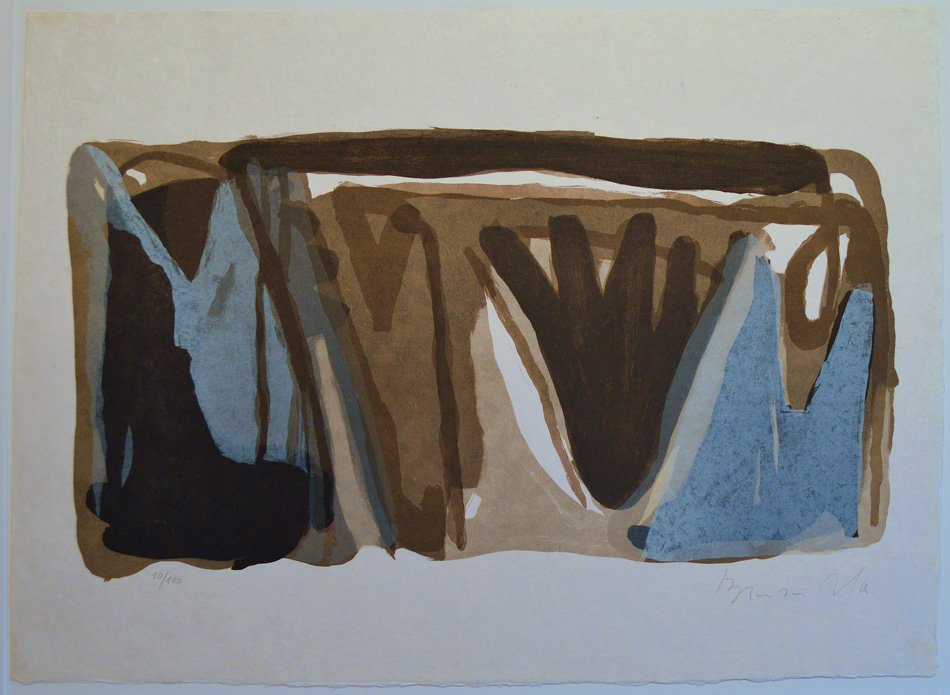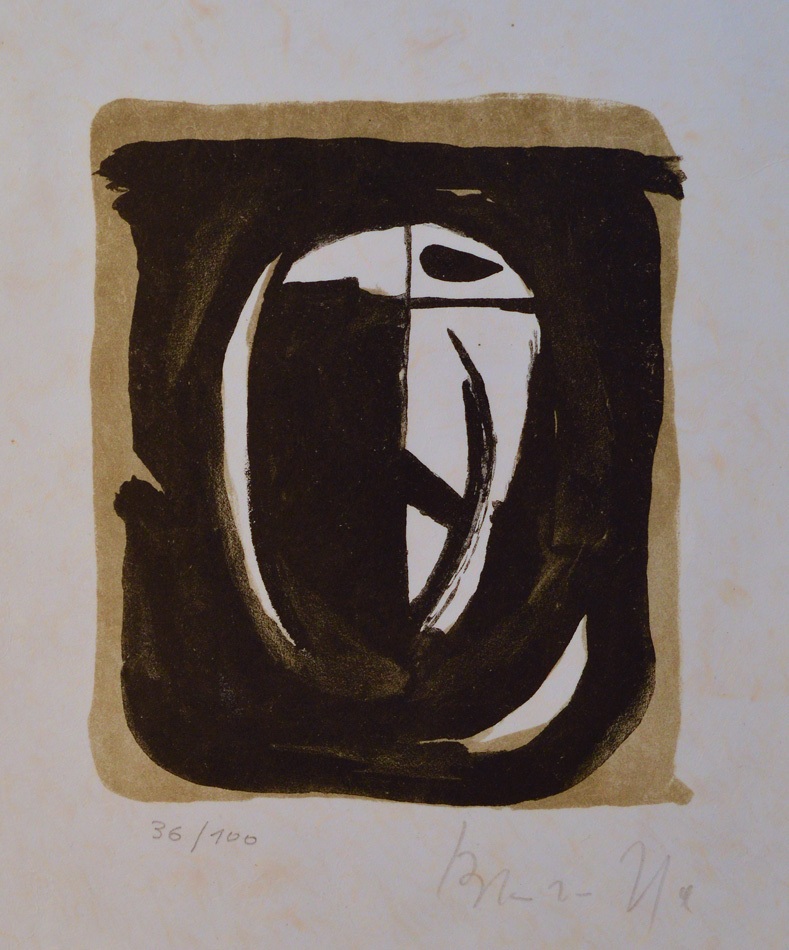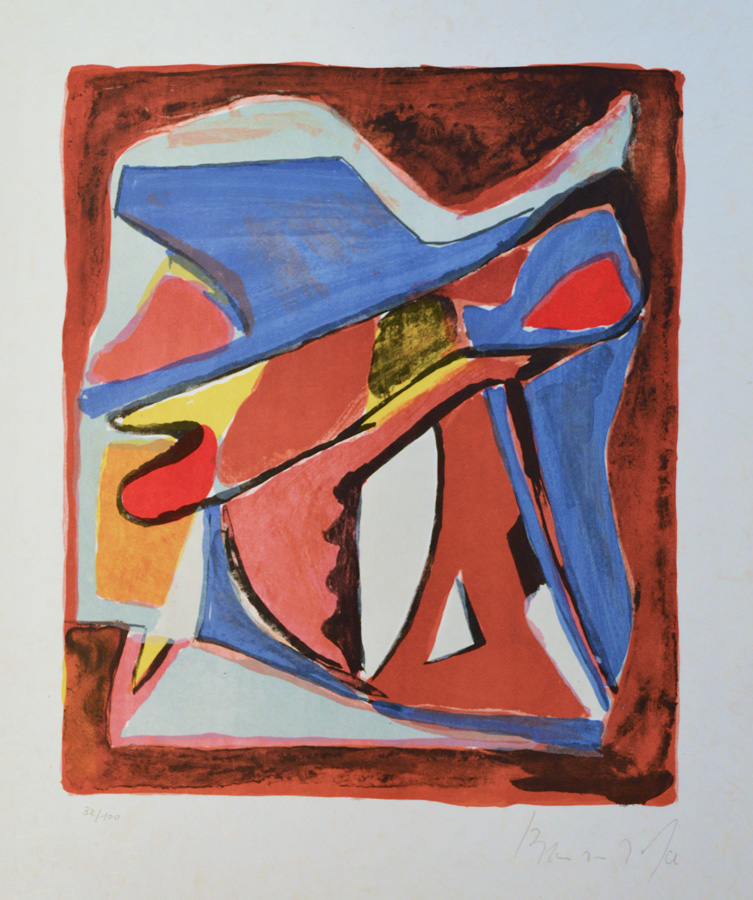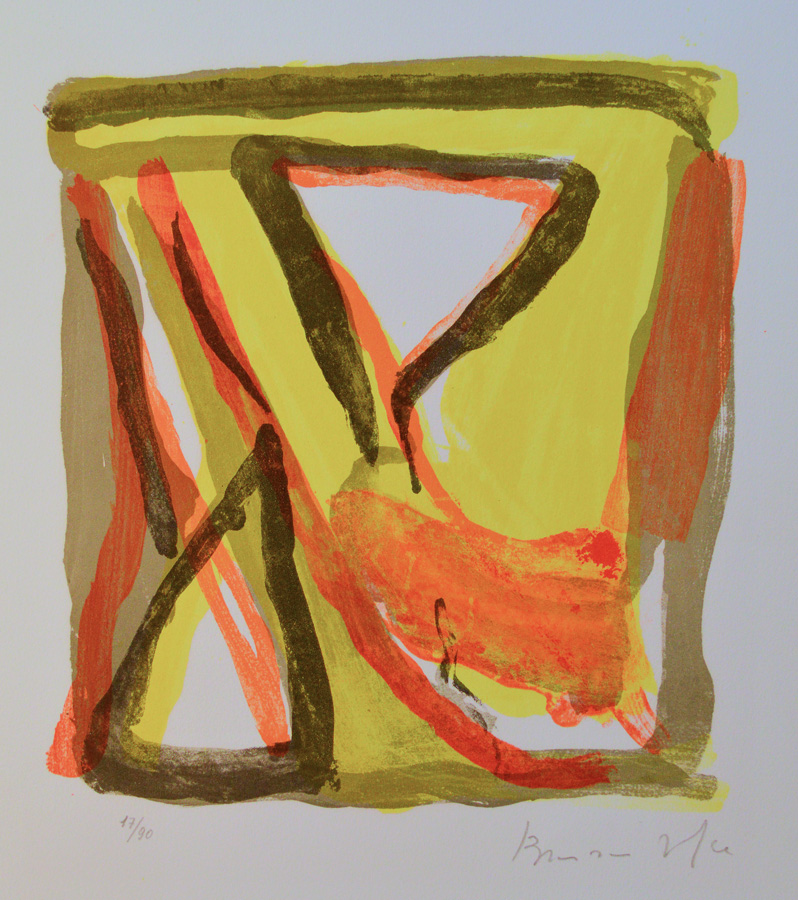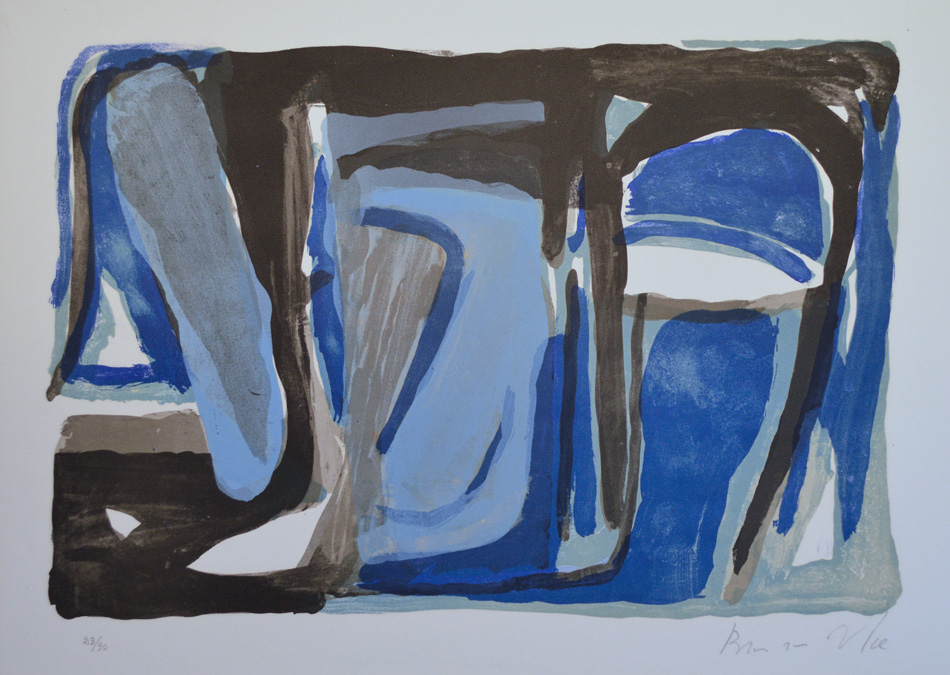|
|
|
Bram van Velde spent most of his artistic life in Paris, to which he moved in 1925 and which he left in 1965, when he settled in Switzerland for the remainder of his life. Van Velde served as a conduit, bringing expressionist abstraction to Paris, mixing it with existentialism, and passing it on to the COBRA group in turn. When the Pompidou in 1988 put on Les Cinquantes, a group retrospective of the 1950s in Europe and America, one entered the exhibit by passing through a room of paintings by Bram van Velde. In his History of Modern Art, H. H. Arnason called Van Velde "one of the most isolated and powerful of Art Informel painters" and suggests that he also serves to link American Abstract painting (and particularly his countryman Willem de Kooning) to the COBRA painters. Van Velde has been the subject of studies by painters such as Pierre Alechinsky (see "Words for Bram" in his Paintings and Writings, pp. 103-107 and in his etching, Ligne B V V), but the best well known commentary upon him is by his friend, Samuel Beckett, who wrote in 1949 that Bram van Velde is "the first to submit wholly to the incoercible absence of relation, in the absence of terms or, if you like, in the presence of unavailable terms, the first to admit that to be an artist is to fail, as no other dare fail, that failure is his world and to shrink from it desertion, art and craft, good housekeeping, living. I know that all that is required now, in order to bring this horrible matter to an acceptable conclusion, is to make of this submission, this admission, this fidelity to failure, a new occasion, a new term of relation, and of the act which, unable to act, obliged to act, he makes, an expressive act, even if only of itself, of its impossibility, of its obligation." For Beckett, Bram van Velde embodies the spirit expressed at the end of Beckett's play, Waiting for Godot, when tired of waiting, one of Beckett's tramps asserts, "I can't go on," but, having no alternatives, is forced to agree to return the next day to wait for Godot. Van Velde, who embodied for the artists of the 1950s this heroic stance towards life, became for them the model of what it would take for art to survive in the post-War world. In 1973, Bram van Velde was awarded the "Grand Prix National des Arts et Lettres"; in 1975 he was awarded the "prix des Belles Lettres" (awarded once every 3 years by the Sociétés de Genève, Lausanne, et Neuchâtel).
Major Exhibitions: retrospective organized by Franz Meyer (Chagall's son-in-law and the author of a major text on Chagall) at The Kunsthalle, Berne, 1958; retrospective at the Stedelijk Museum, 1959; Galerie Notizie, Turin, 1960; La Galerie l'Obelisco, Rome, 1961; Galerie Knoedler, Paris (texts by Jean Leymarie, Pierre Schneider, Christian Dotremont, Pierre Alechinsky), 1961; Galerie Knoedler, NY, 1962; Galerie Krugier, Geneva, 1962; Galerie Knoedler, NY, 1964; Walker Art Center, Minneapolis, 1964; San Francisco Museum of Art, 1965; Colorado Fine Arts Center, Colorado Springs; retrospective at the Wallraf-Richartz Museum, Cologne (preface by Franz Meyer), 1966; Galerie Leonhart, Munich, 1966; Galerie Birch, Copenhagen,1966; Galerie La Balance, Brussels, 1966; retrospective Museo d'Arte Moderna, Turin (prefaces by Luigi Mallé and Franz Meyer), 1966; retrospective at the Kunstnerhus, Oslo (text by Asger Jorn, preface by F. Matheson), 1967; Galerie Knoedler, NY, 1968 (preface by Franz Meyer); Albright-Knox Art Gallery, Buffalo NY [this is actually a public museum], 1968; exhibition of his prints, Kunsthalle de Worpswede, preface by Jacques Putnam, 1969; Galerie Knoedler, Paris, 1969; exhibition of watercolors, Galerie Bérnador, Geneva (preface by Jean Leymarie (author of many books on the Impressionists, Post-Impressionists, and Moderns), 1969; Musée National d'art Moderne, Paris (text ed. Jean Leymarie and Gaetan Picon), 1970. By the end of the 1960s, van Velde had achieved classic status and his works began appearing in retrospectives regularly in Europe and the U.S., as signalled by the massive exhibition mounted by the Pompidou in 1989 and the massive large-format 260-page full-color text that accompanied it with extensive records of exhibitions, retrospectives, and a fairly full bibliography.
General Bibliography:
Samuel Beckett et al, ] Bram Van Velde (NY: Grove Press, 1960); Guy le Prat, Bram van Velde, Catalogue raisonné de l'oeuvre de peinture (Pars, Turin, NY: Harry N. Abrams, 1961; André de Bouchet, Bram van Velde (St. Paul-de-Vence: Fondation Maeght, 1973), Centre Georges Pompidou, Bram van Velde (Paris SPADEM/Eds. Center Pompidou, 1989); Charles Juliet, Rencontres avec Bram van Velde (Paris: Fata Morgana, 1980); Charles Juliet, Conversations with Samuel Beckett and Bram van Velde , trans. Janey Tucker, Morgaine Reinl, Aude Jeanson, Tracy Cooke, & Axel Nesme, Champaign IL, Dalkey Archive Edition, 2005); Jean-Hubert Martin, ed. Bram van Velde (Paris: Éditions du Centre Pompidou, 1989); Franz Meyer, Bram van Velde (Zurich: Maeght Zurich, 1976); Musée National d'Art Moderne, Bram van Velde (Paris: Musée National d'Art Moderne, 1971); Yves Peyré, Bram van Velde (Paris: Daniel Lelong Editeur, 1984: Repères 15); Georgina Oliver, Bram van Velde (Copenhagen: Borgen, 1983); Jacques Putnam and Charles Juliet, Bram van Velde (Paris: Maeght Editeur, 1975: this is a wonderful, highly-illustrated picture book with extensive text and many illustrations and bibliography); Bram Van Velde, Bram van Velde: Archives de l'art contemporain (Paris: Musée d'art Moderne de la Ville de Paris, 1970); Bram Van Velde, Bram van Velde: Catalogue Raisonné of the Paintings (NY: Abrams, 1961); Bram Van Velde et al., Bram van Velde (Paris: Beaux Arts, 1989); Bram van Velde (BeauxArts Hors Serie 1989—this is a special number outside of the normal subscription devoted completely to Bram van Velde's works and life).
Prints: Bram van Velde made 413 prints—almost all of them lithograph—of which 10 were made between 1923 and 1955 and the rest between 1959 and his death in 1981. It would seem that for an artist who painted remarkably slowly, prints offered him a new way to work out his ideas and to present himself to the world. As a Robert C. Morgan wrote in his review of van Velde's 1983 show at the Lefebre Gallery in NY City, "Van Velde's lithographs . . . hold forth in a way that is more sinewy, cerebral and incongruous than the major Abstract Expressionists. Indeed, it is these qualities, along with his lack of stylistic pretension and his clear indifference to notions of formal cohesion, that are in large part responsible for the 'underground' nature of his reputation. Whereas de Kooning, for all his obvious fluidity, generally relies on the gradual attenuation of bold gesture to achieve formal resolution, van Velde has no comparable apparatus. Works like Le Bonheur de Matisse (1981) [unfortunately reproduced upside down on p. 177, but available to be seen correctly here] show the startling degree to which each of van Velde's gestures remains independent of the others. What's more, of course, is that in lithography each of the colors requires a separate plate, and the final composition is the product of their repeated layering. In van Velde's case, the medium thus adds to the consciously indeterminate appearance of the shapes, which collide and intertwine in weird configurations, never quite matching one another. They neither float in the manner of Gorky's shapes, nor ever entirely hold their ground. The surface shifts continuously, confounding our conceptions both of form and of composition" (Art in America, September 1983, pp. 175-76).
There is a 3-volume catalogue raisonné of Bram van Velde's lithographs edited by Charles Juliet & Georges Duthuit, Bram van Velde Lithographies (Paris: Maeght Editeur, 1993); Bram Van Velde, Les lithographies, 1923-1973 (Paris: Yves Riviere editeur, 1973) Bram Van Velde, Les lithographies II, 1974-1978 (Genève: Musée d'art et d'histoire, 1979); Bram Van Velde, Les lithographies III, 1979-1981 (Genève: Musée d'art et d'histoire, 1984). There is also a very much more affordable one-volume selection which prints 55 of the color lithographs in color, unlike the three-volume catalogue raisonné, where almost all of them are reproduced in black and white. See Charles Juliet and Georges Duthuit, Bram van Velde Lithographies (Paris: Maeght Editeur, 1993),
|
|
|
|
|
|
|

